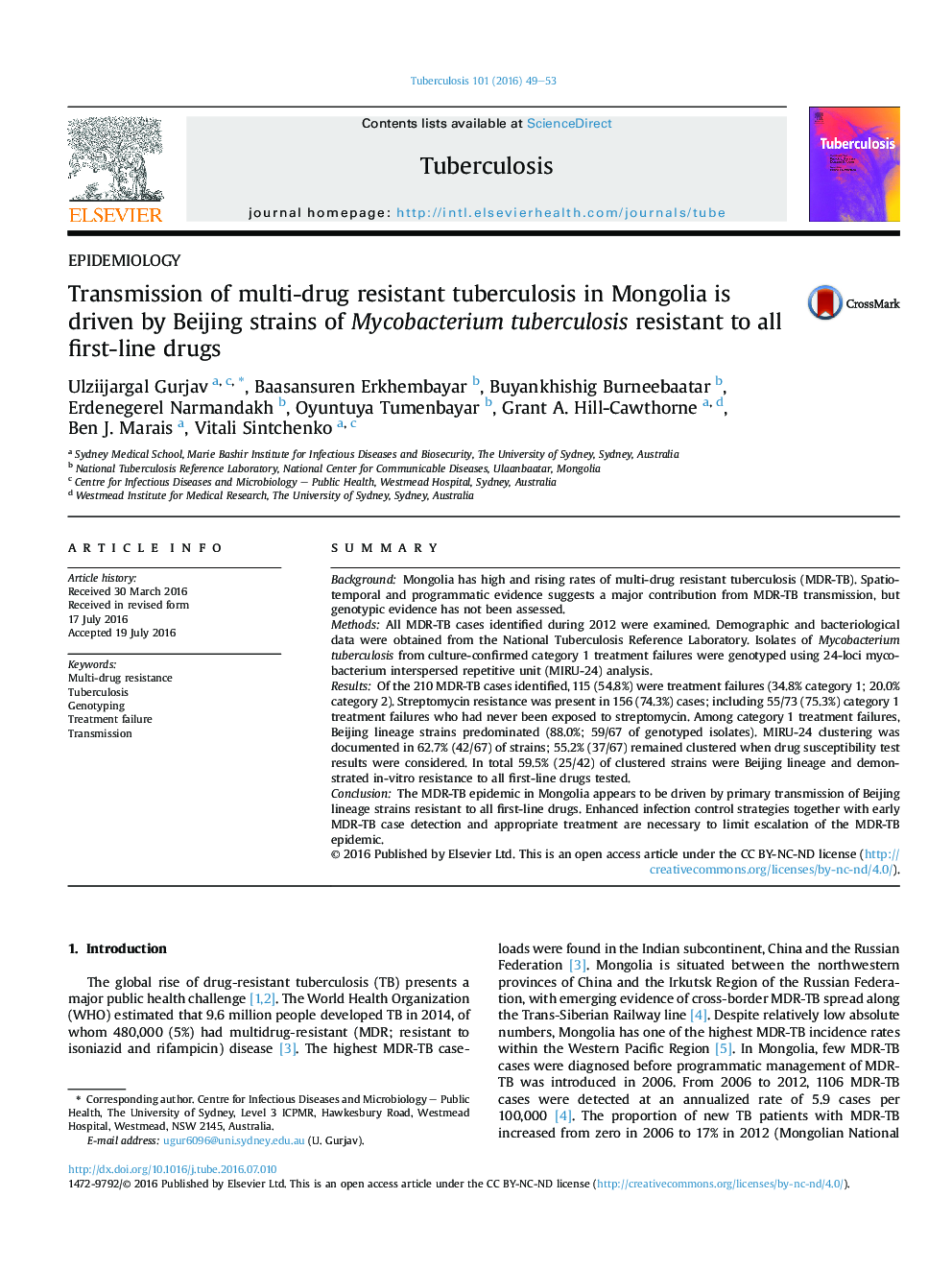| Article ID | Journal | Published Year | Pages | File Type |
|---|---|---|---|---|
| 2401379 | Tuberculosis | 2016 | 5 Pages |
SummaryBackgroundMongolia has high and rising rates of multi-drug resistant tuberculosis (MDR-TB). Spatio-temporal and programmatic evidence suggests a major contribution from MDR-TB transmission, but genotypic evidence has not been assessed.MethodsAll MDR-TB cases identified during 2012 were examined. Demographic and bacteriological data were obtained from the National Tuberculosis Reference Laboratory. Isolates of Mycobacterium tuberculosis from culture-confirmed category 1 treatment failures were genotyped using 24-loci mycobacterium interspersed repetitive unit (MIRU-24) analysis.ResultsOf the 210 MDR-TB cases identified, 115 (54.8%) were treatment failures (34.8% category 1; 20.0% category 2). Streptomycin resistance was present in 156 (74.3%) cases; including 55/73 (75.3%) category 1 treatment failures who had never been exposed to streptomycin. Among category 1 treatment failures, Beijing lineage strains predominated (88.0%; 59/67 of genotyped isolates). MIRU-24 clustering was documented in 62.7% (42/67) of strains; 55.2% (37/67) remained clustered when drug susceptibility test results were considered. In total 59.5% (25/42) of clustered strains were Beijing lineage and demonstrated in-vitro resistance to all first-line drugs tested.ConclusionThe MDR-TB epidemic in Mongolia appears to be driven by primary transmission of Beijing lineage strains resistant to all first-line drugs. Enhanced infection control strategies together with early MDR-TB case detection and appropriate treatment are necessary to limit escalation of the MDR-TB epidemic.
